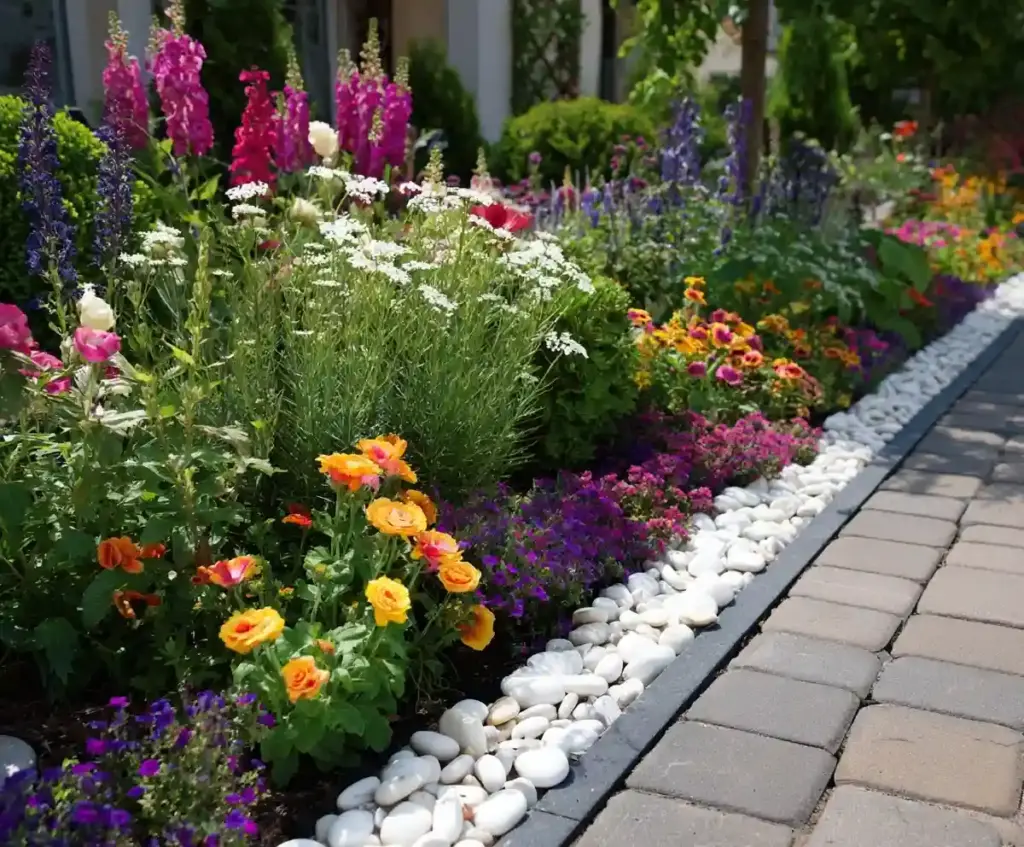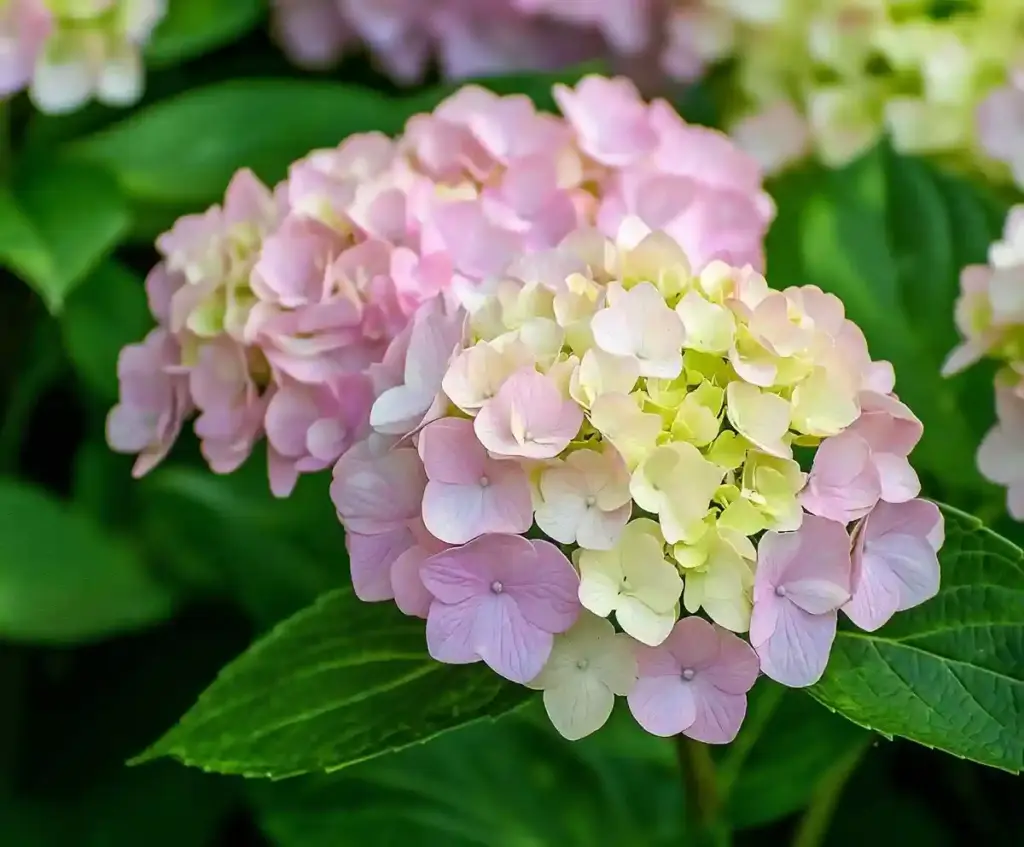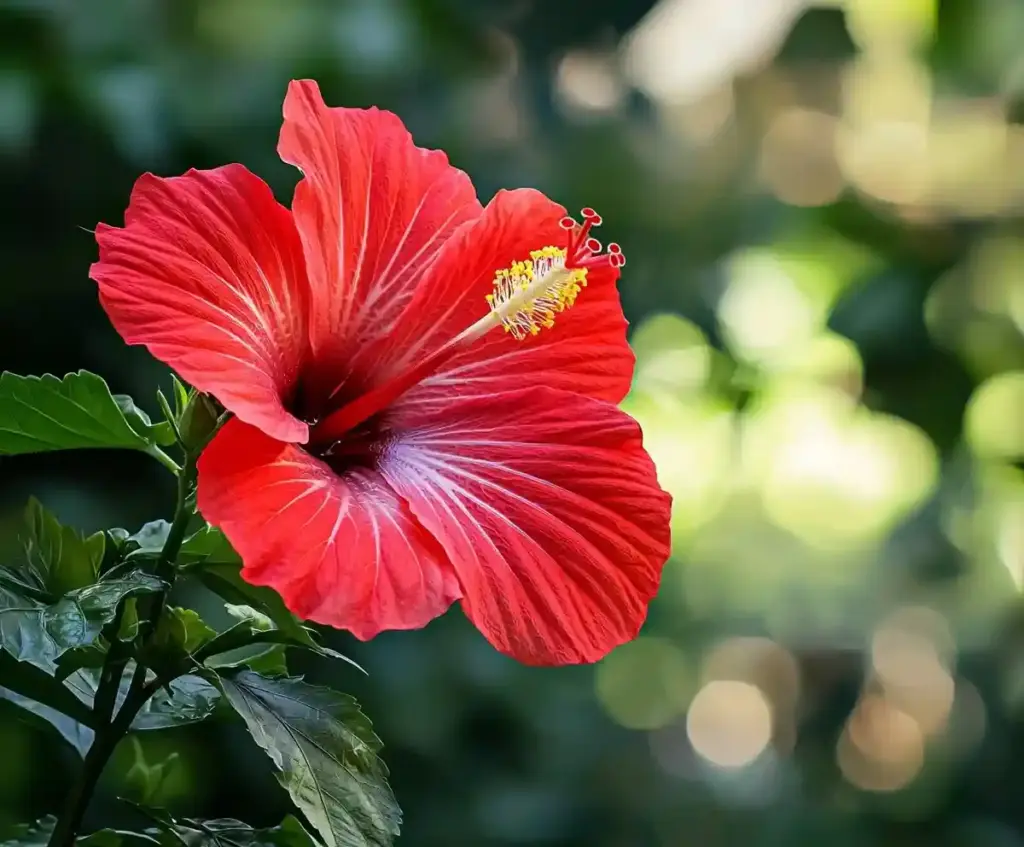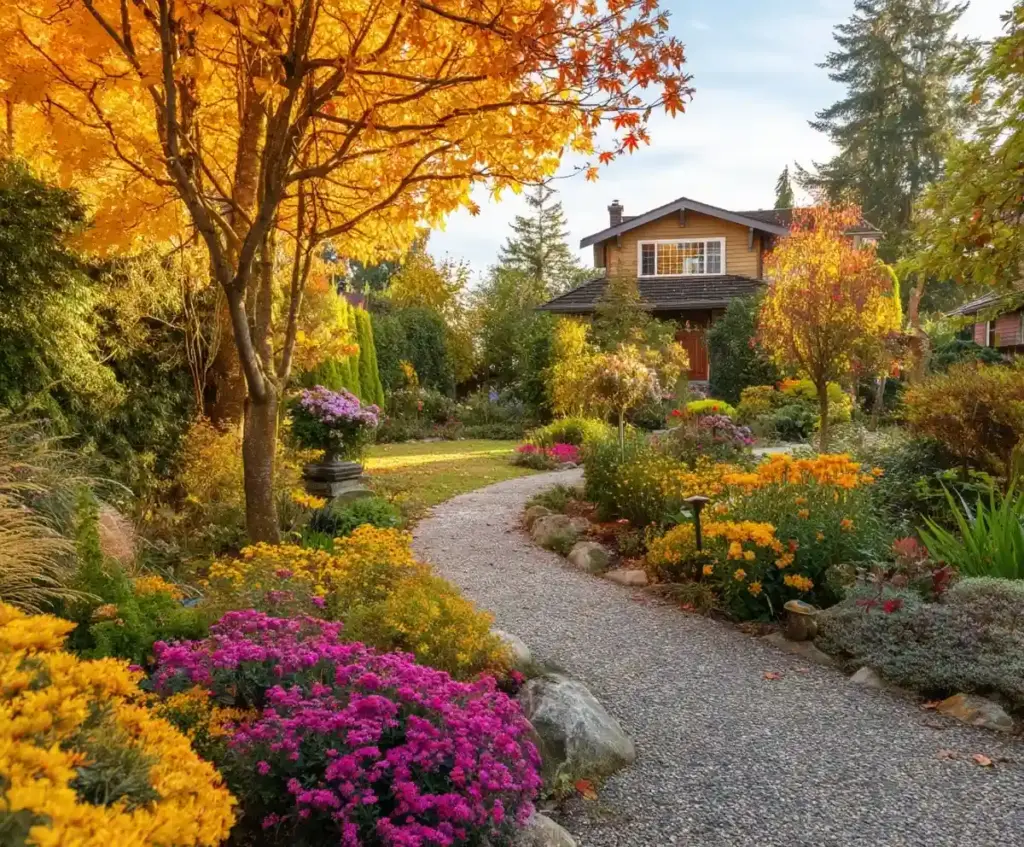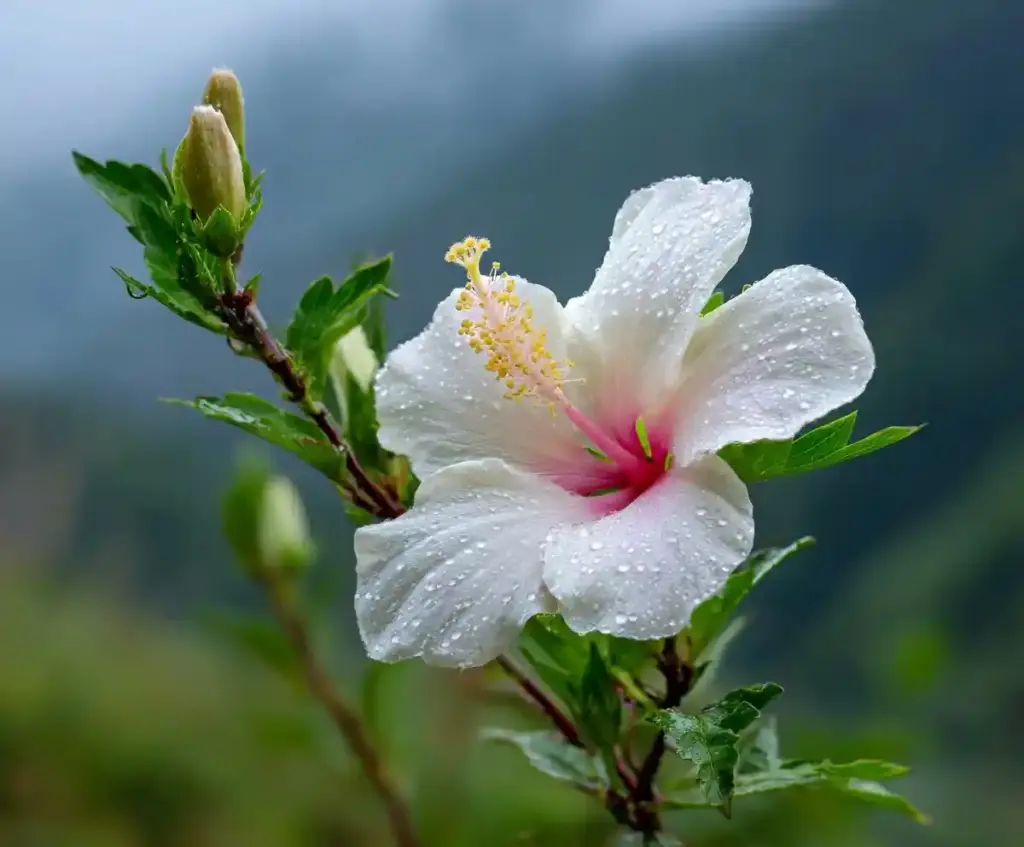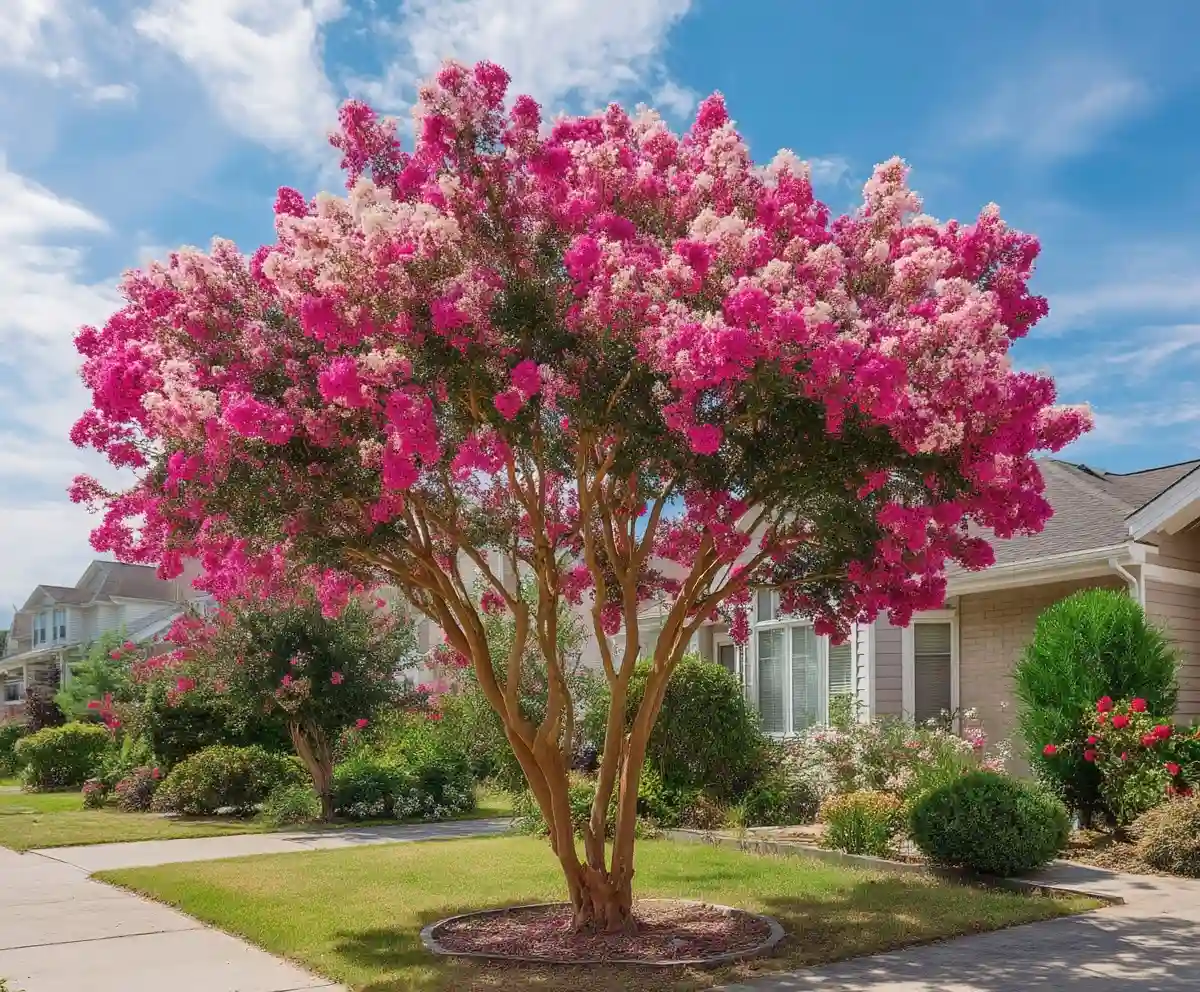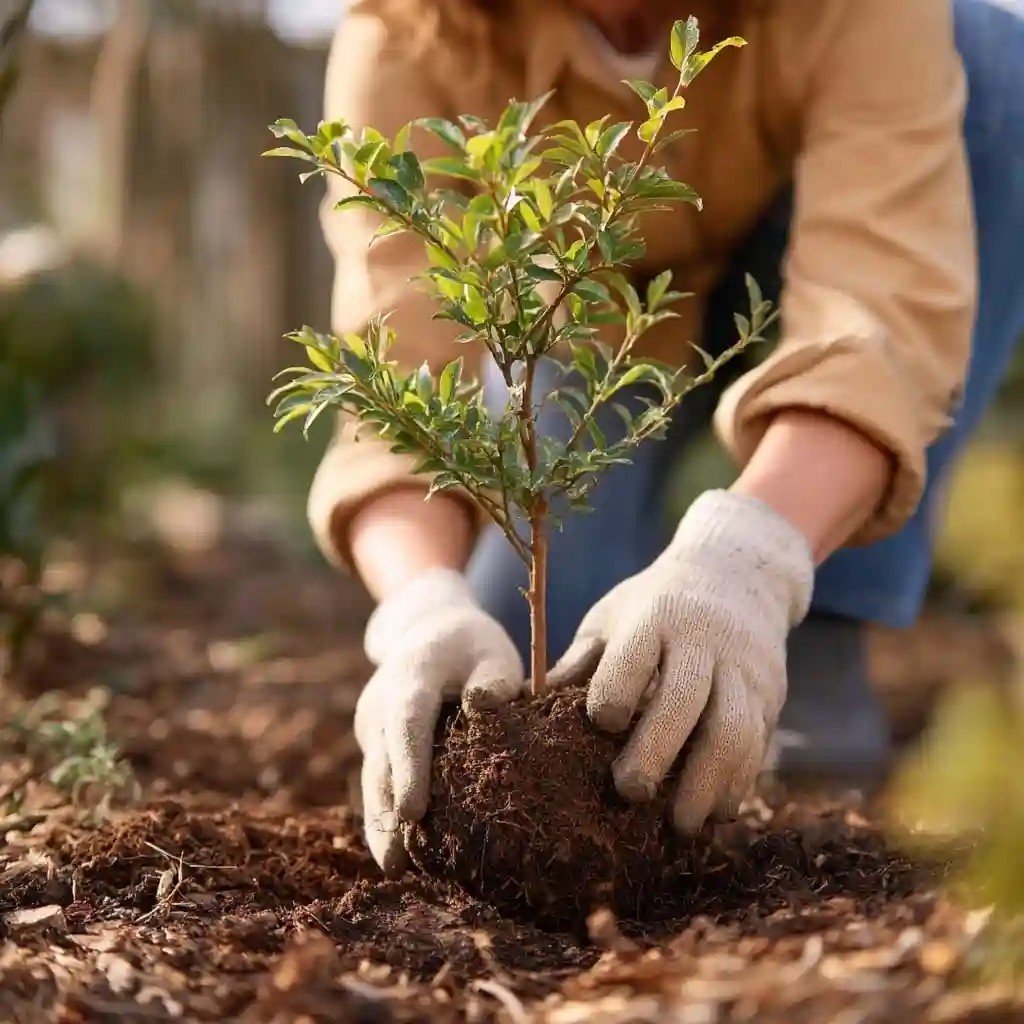Grow crepe myrtle trees if you want a low-maintenance, long-blooming tree that brings vibrant color to your garden all summer. These sun-loving trees are famous for their cascading clusters of flowers, smooth peeling bark, and ability to thrive in hot, humid climates. Unlike short-lived spring bloomers, crepe myrtles offer months of color, with blossoms ranging from soft white to vivid pink and purple. Whether you’re planting a towering tree for shade or a compact dwarf variety for a garden border, crepe myrtle trees reward you with beauty and resilience season after season.
Table of Contents
How to Plant Crepe Myrtle Trees
Planting crepe myrtle trees correctly is the key to helping them thrive for years to come. These trees love sunlight, so choose a spot that receives at least six hours of direct sunlight each day. A sunny location encourages the heaviest blooms and keeps the tree healthy.
Crepe myrtles prefer well‑drained soil with a slightly acidic pH between 5.0 and 6.5. If your soil tends to stay wet, consider planting on a slightly raised mound or improving drainage with organic matter. Standing water around the roots can lead to rot and poor growth.
When you’re ready to plant:
- Dig a hole twice as wide as the root ball but only as deep as the pot it came in.
- Keep the root ball slightly above the soil line to prevent burying the trunk too deeply.
- Backfill gently and water thoroughly to help the roots settle.
- Apply mulch around the base, leaving space around the trunk to avoid rot.
By giving your crepe myrtle the right start, you’ll encourage strong root development and set the stage for spectacular blooms in the seasons ahead.
How to Water Crepe Myrtles
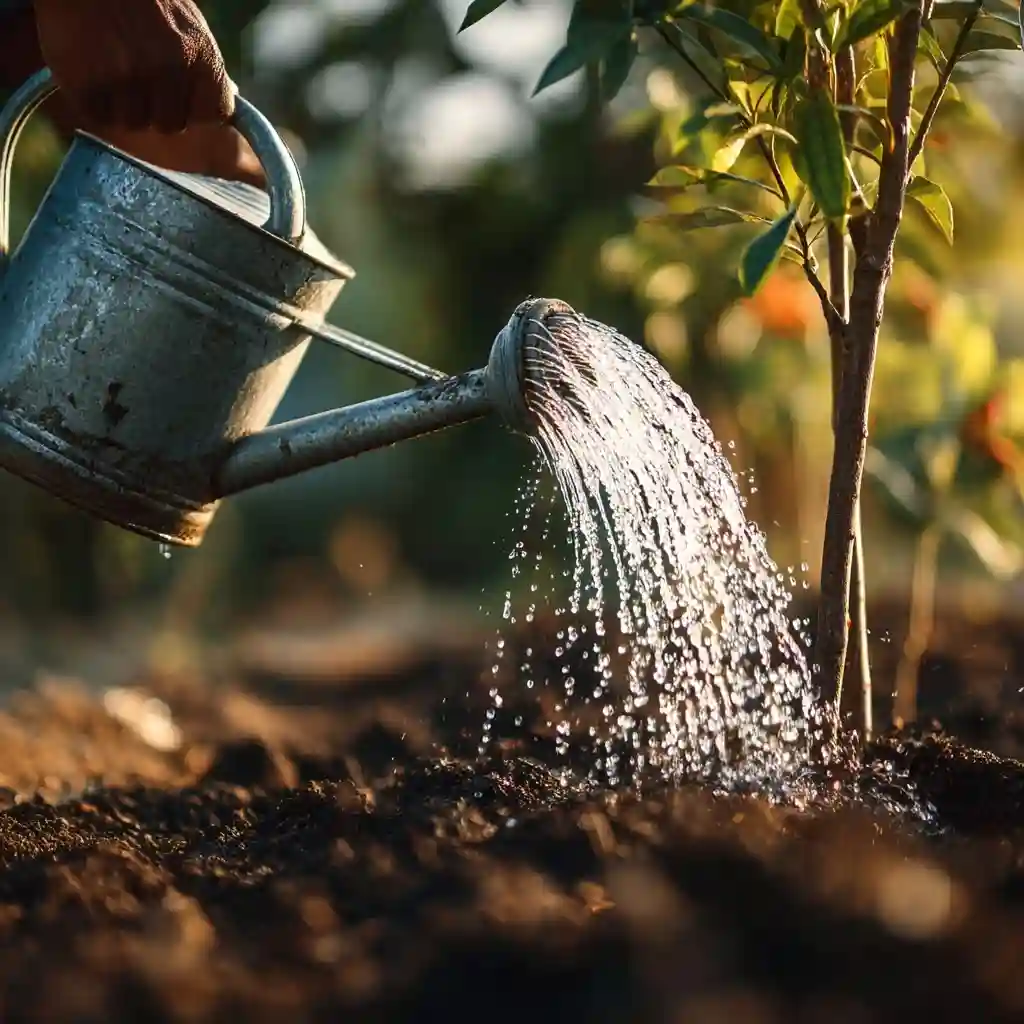
Watering crepe myrtle trees properly is essential for helping them establish strong roots and produce abundant blooms. During the first few weeks after planting, water deeply two to three times per week, ensuring the moisture reaches the root zone. Once the tree is established, a deep watering once per week is usually enough, even in the summer heat.
Crepe myrtles are drought‑tolerant once mature, but consistent watering during their first growing season leads to healthier growth and more vibrant flowers. Always water at the base rather than overhead to keep the foliage dry and reduce the risk of fungal issues.
Adding a 2‑3 inch layer of mulch around the base helps retain moisture and keeps the soil cool. Avoid piling mulch against the trunk to prevent rot.
If you want to boost blooms, consider a light application of high‑nitrogen fertilizer in early spring, followed by a second feeding two months later. This encourages strong growth without overwhelming the tree.
Pruning Crepe Myrtles
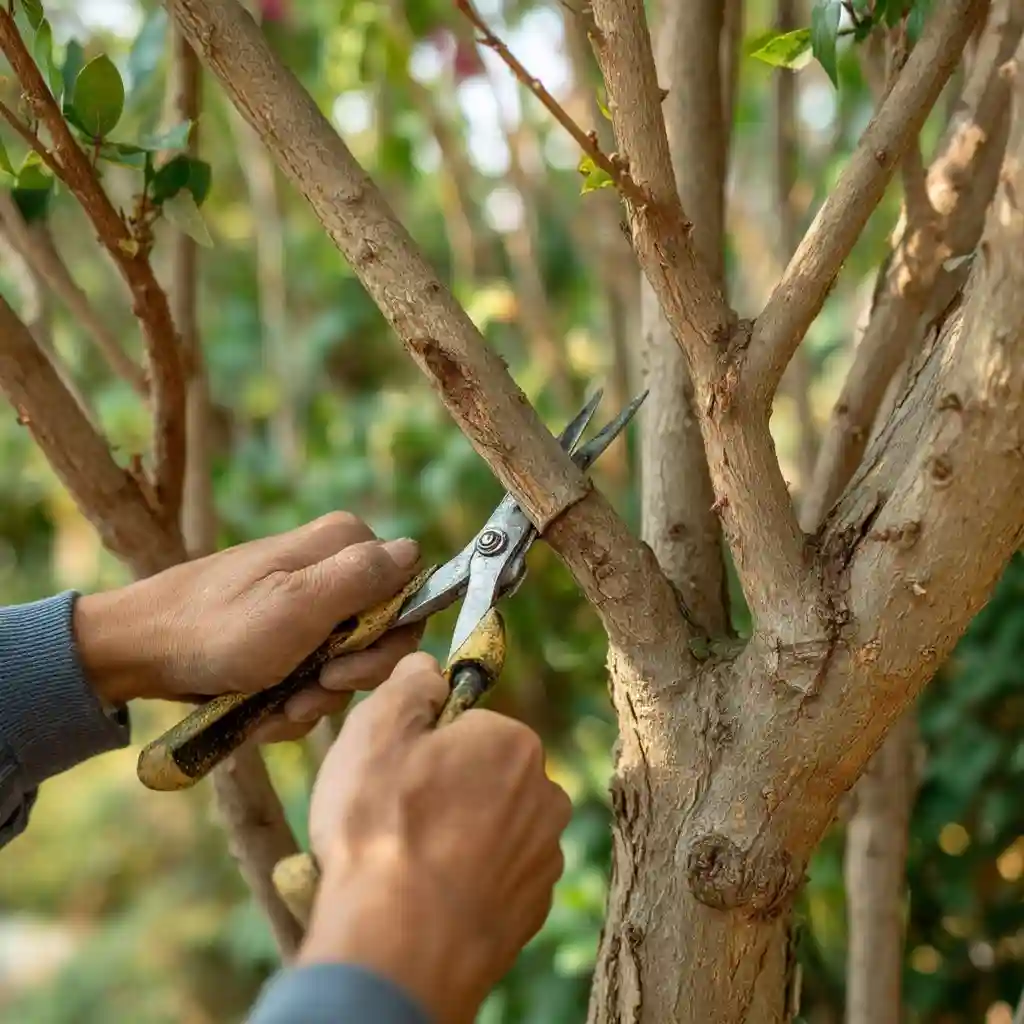
Pruning crepe myrtle trees is not complicated, but doing it correctly will keep your tree healthy, shapely, and full of blooms. Unlike some flowering trees, crepe myrtles bloom on new wood, meaning the growth that develops in spring will carry the flowers.
Here’s how to prune properly:
- Prune in late winter or very early spring before new growth begins.
- Remove suckers—small shoots emerging from the base of the trunk.
- Cut crossing or rubbing branches to improve air circulation and prevent disease.
- Trim dead or damaged branches to maintain tree health.
- Avoid “topping” the tree, which means cutting large branches down to stubs. This weakens the tree, ruins its natural shape, and reduces flowering.
If you want to encourage a second flush of blooms in summer, deadhead spent flower clusters by cutting them just below the bloom. This simple maintenance helps the tree focus energy on new growth and extended flowering.
Pruning with a light hand preserves the tree’s natural beauty while enhancing its ability to produce generous clusters of blossoms year after year.
Conclusion
Growing crepe myrtle trees is a rewarding experience for any gardener who wants a colorful, low‑maintenance tree. With the right planting spot, consistent watering in the first year, and light annual pruning, your crepe myrtles will thrive for decades. These resilient trees offer year‑round interest—from their vibrant summer blooms to their smooth, peeling bark in winter.
If you want a garden that bursts with color through the hottest months, crepe myrtle trees are a perfect choice. Pair them with perennials, ornamental grasses, or flowering shrubs to create a layered, eye‑catching landscape.
FAQs
1. When is the best time to plant crepe myrtle trees?
Early spring and fall are ideal. Avoid planting right before a frost, and water well after planting.
2. How tall do crepe myrtle trees grow?
Standard varieties can reach 15–20 feet, while dwarf types stay 12–24 inches, making them great for borders or small gardens.
3. Do crepe myrtles need fertilizer?
Yes, but lightly. A high‑nitrogen fertilizer in early spring and again after two months encourages healthy growth and blooms.
4. How often should I prune crepe myrtle trees?
Prune once a year in late winter, removing suckers and crossing branches, but avoid cutting large branches to stubs.
5. Can crepe myrtles survive drought?
Once established, they are drought‑tolerant, but young trees need regular deep watering to develop strong roots.
🌿 Love gardening inspiration? Follow me on Pinterest for bold plant ideas, tips, and seasonal color!
More Posts
